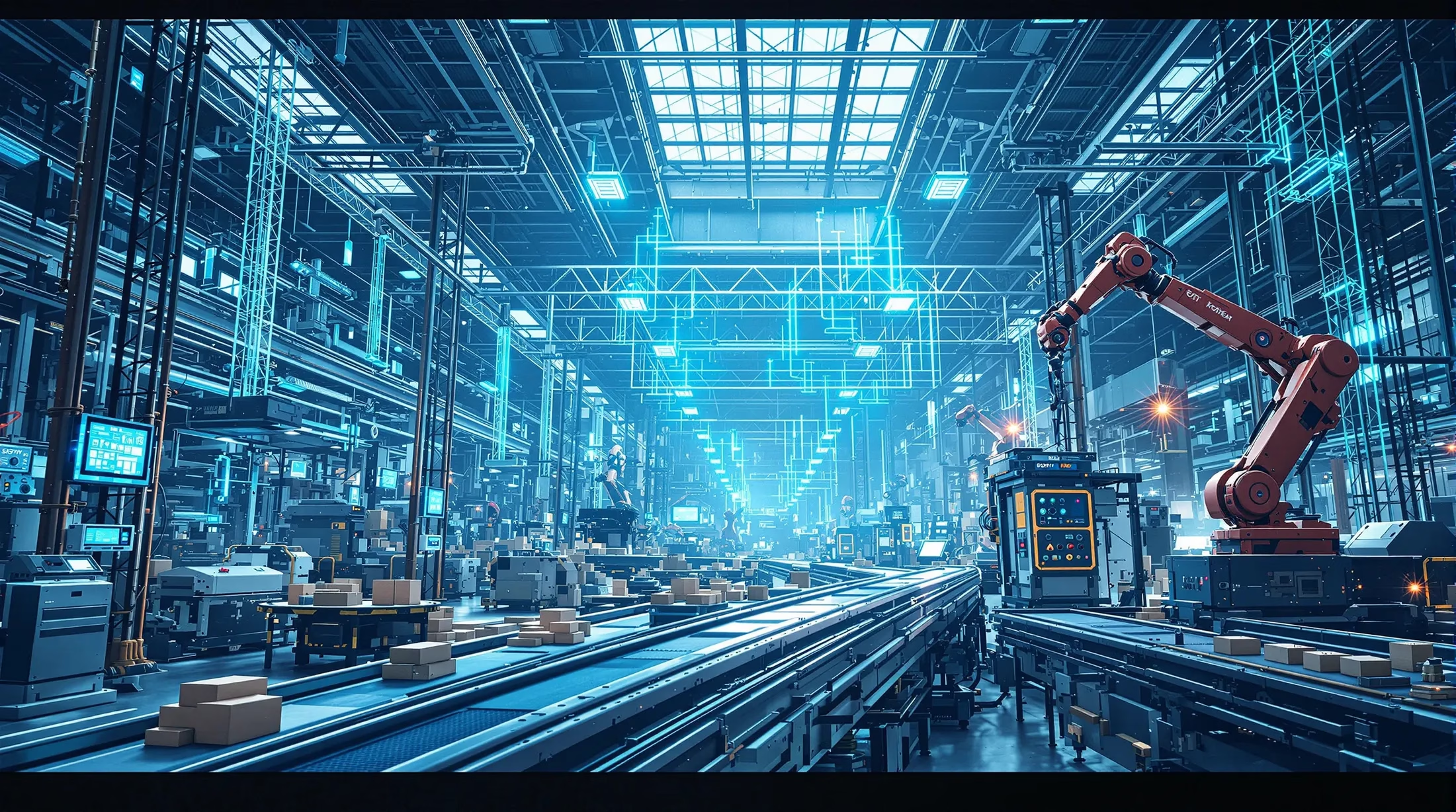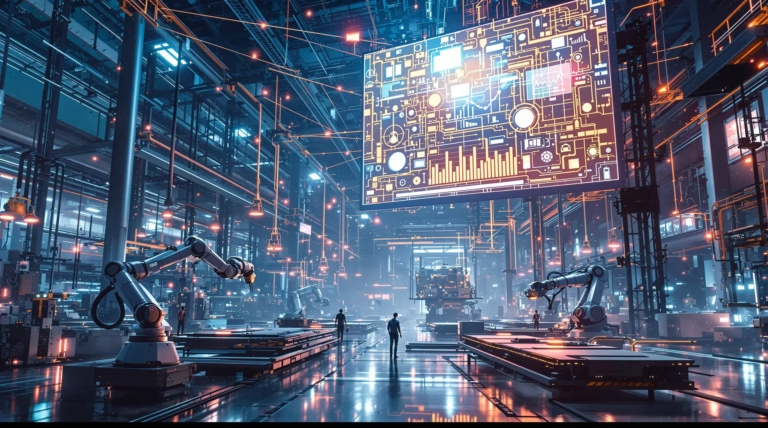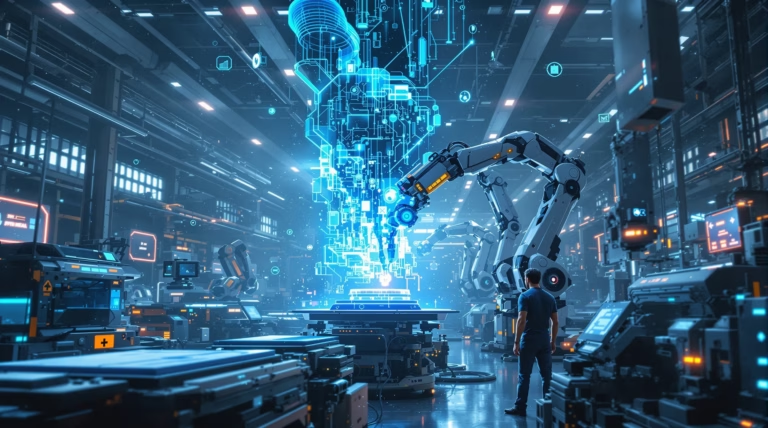Manufacturing Industry 4.0: Revolutionizing Production for the Future
The manufacturing landscape is undergoing a revolutionary transformation through Industry 4.0, where digital innovation meets traditional production methods. This comprehensive guide explores how smart technologies are reshaping manufacturing processes and creating unprecedented opportunities for growth and efficiency.
Understanding Manufacturing Industry 4.0
Manufacturing Industry 4.0 represents a fundamental shift in production methodology, marking the fourth industrial revolution. This digital transformation integrates cutting-edge technologies into traditional manufacturing processes, creating interconnected systems that communicate, analyze, and improve operations in real-time.
At its core, Industry 4.0 combines physical production with smart digital technology, machine learning, and big data analytics to create intelligent, self-optimizing production environments. This new paradigm enables unprecedented collaboration between machines, systems, and humans, allowing factories to operate with greater autonomy and intelligence.
The Evolution of the Industrial Revolution
- First Industrial Revolution – Late 18th century: Introduced mechanization powered by water and steam
- Second Industrial Revolution – Early 20th century: Brought electrical energy, mass production, and assembly lines
- Third Industrial Revolution – 1970s: Emerged with electronics, early automation, and computer technology
- Fourth Industrial Revolution – Present: Characterized by the fusion of physical, digital, and biological technologies
Key Technologies Driving Industry 4.0
- Internet of Things (IoT) – Creates networks of sensors and devices for real-time data collection and exchange
- Artificial Intelligence – Transforms raw data into actionable intelligence for continuous improvement
- Advanced Robotics – Handles complex tasks with enhanced flexibility and safety
- Cyber-physical Systems – Bridges digital and physical worlds through feedback loops
- Big Data Analytics – Processes massive information streams for valuable insights
The Role of Smart Factories in Industry 4.0
Smart factories embody Industry 4.0 principles by integrating operational technology with information technology infrastructure and IoT networks. These facilities continuously collect, analyze, and leverage real-time data to drive autonomous decision-making and proactive operations, creating manufacturing environments that learn and improve with each production cycle.
Components of a Smart Factory
| Component | Function |
|---|---|
| Cyber-physical Systems | Monitor and control physical processes through digital twins |
| IoT Sensors | Capture critical operational data points in real-time |
| Advanced Connectivity | Ensures seamless data flow through 5G and edge computing |
| Manufacturing Execution Systems | Coordinate production activities across the factory floor |
| Augmented Reality Interfaces | Enhance worker capabilities and process visualization |
Benefits of Smart Manufacturing
- Operational Efficiency – Real-time monitoring and AI-driven optimization reduce waste, minimize downtime, and maximize resource utilization
- Production Flexibility – Rapid line reconfiguration enables economical small-batch production and quick market response
- Maintenance Optimization – Predictive capabilities reduce unplanned downtime by up to 50% while extending equipment lifespan
- Enhanced Customization – Flexible systems enable mass personalization without efficiency loss
- Quality Improvement – Continuous parameter monitoring ensures consistent output and reduced defect rates
- Workforce Enhancement – Automation of repetitive tasks allows staff to focus on creative, value-added activities
- Improved Traceability – Comprehensive data tracking simplifies compliance and provides detailed product provenance
Enhancing Supply Chain Efficiency with Industry 4.0
Industry 4.0 technologies transform traditional linear supply chains into dynamic, interconnected networks. Through comprehensive digital integration, manufacturers achieve end-to-end visibility and data-driven decision-making capabilities. This transformation typically reduces supply chain costs by 10-20% while improving service levels and enabling rapid adaptation to market changes.
Integration of IoT and Supply Chain Management
IoT technology creates unprecedented visibility across supply chain operations through smart sensor networks. These sensors monitor inventory levels, equipment status, environmental conditions, and location tracking in real-time. McKinsey research indicates IoT applications in manufacturing and supply chain could generate $1.2 to $3.7 trillion in annual economic value by 2025.
| IoT Capability | Supply Chain Impact |
|---|---|
| Automated Inventory Systems | Self-triggered replenishment based on stock thresholds |
| Connected Transportation | Optimized routing and delivery scheduling |
| Real-time Monitoring | Proactive issue identification and resolution |
| Data Sharing Platforms | Enhanced supplier-manufacturer-distributor coordination |
Predictive Maintenance and Asset Tracking
- Equipment Monitoring – IoT sensors detect changes in vibration, temperature, and sound patterns
- Maintenance Optimization – Machine learning algorithms predict failures, reducing downtime by 30-50%
- Asset Lifespan – Predictive maintenance extends machine life by 20-40%
- Real-time Tracking – Continuous monitoring of materials, components, and finished goods
- Quality Assurance – Environmental and handling condition monitoring throughout distribution
Challenges and Opportunities in Industry 4.0
The digital transformation through Industry 4.0 presents manufacturers with significant implementation challenges alongside growth opportunities. Organizations must navigate complex technological integration, substantial infrastructure investments, and workforce development needs. Success in addressing these challenges enables remarkable improvements in operational efficiency, product quality, and market responsiveness, positioning companies for sustainable growth in the digital manufacturing era.
Addressing Cybersecurity Concerns
As manufacturing facilities become increasingly connected, cybersecurity emerges as a critical concern for Industry 4.0 implementation. The proliferation of IoT devices, cloud systems, and interconnected production equipment creates an expanded attack surface that malicious actors can potentially exploit. A single security breach can lead to production disruptions, intellectual property theft, or safety hazards in highly automated environments.
- Secure-by-Design Principles – implementation of security measures from the initial system design phase
- Network Segmentation – isolation of critical production systems to contain potential breaches
- Authentication Protocols – robust verification systems for all users and devices
- Data Encryption – protection of sensitive information both in transit and at rest
- Security Operations Centers – continuous monitoring of threats across the digital ecosystem
- Zero-Trust Framework – verification of every user and device regardless of location
- Staff Training – regular cybersecurity awareness and response preparation
Sustainability and Eco-Efficiency
| Technology Application | Environmental Impact |
|---|---|
| Real-time Monitoring | 10-20% reduction in energy usage |
| Predictive Maintenance | Extended equipment lifecycles, reduced waste |
| Digital Simulations | Optimized product lifecycle impact |
| Additive Manufacturing | Significant reduction in material waste |
| Smart Supply Chain | Minimized transportation emissions |
The Future of Manufacturing with Industry 4.0
Industry 4.0 represents a fundamental transformation in manufacturing, combining interconnected digital systems, machine learning algorithms, and real-time data analytics. This technological revolution enables unprecedented levels of customization and production flexibility, with manufacturers reporting 15-20% productivity increases and up to 50% reduction in time-to-market. Market forecasts predict growth exceeding $210 billion by 2026.
Economic Impact and Value Creation
- Global Value Creation – projected $3.7 trillion by 2025 according to World Economic Forum
- Operational Efficiency – 10-30% cost reduction across production operations
- Market Advantages – enhanced competitiveness through improved responsiveness
- Production Innovation – mass customization capabilities with standardized efficiency
- Economic Benefits – potential for reshoring manufacturing activities
- Job Creation – high-value employment opportunities in smart manufacturing
- Export Growth – opportunities in both products and manufacturing technologies
Preparing the Workforce for Industry 4.0
The evolution toward Industry 4.0 is creating a fundamental shift in workforce requirements across manufacturing sectors. As routine and repetitive tasks become increasingly automated, demand is surging for workers with advanced digital skills, systems thinking capabilities, and cross-disciplinary expertise. According to a study by Deloitte, 2.4 million manufacturing positions could remain unfilled between 2018 and 2028 due to this skills gap, representing a potential economic impact of $2.5 trillion.
- Educational Partnerships – development of specialized training programs with academic institutions
- Digital Learning Platforms – implementation of continuous skill development systems
- Augmented Reality Training – real-time guidance systems for complex operational tasks
- Human-Robot Collaboration – integration of cobots to enhance human capabilities
- Cross-disciplinary Training – development of versatile skill sets across multiple domains
- Continuous Learning Programs – regular updates to match evolving technology demands
| Workforce Development Strategy | Business Impact |
|---|---|
| Skills Enhancement Programs | Improved innovation capabilities |
| Collaborative Technologies | Greater operational flexibility |
| Digital Competency Training | Enhanced customization abilities |
| Cross-functional Development | Increased market responsiveness |







